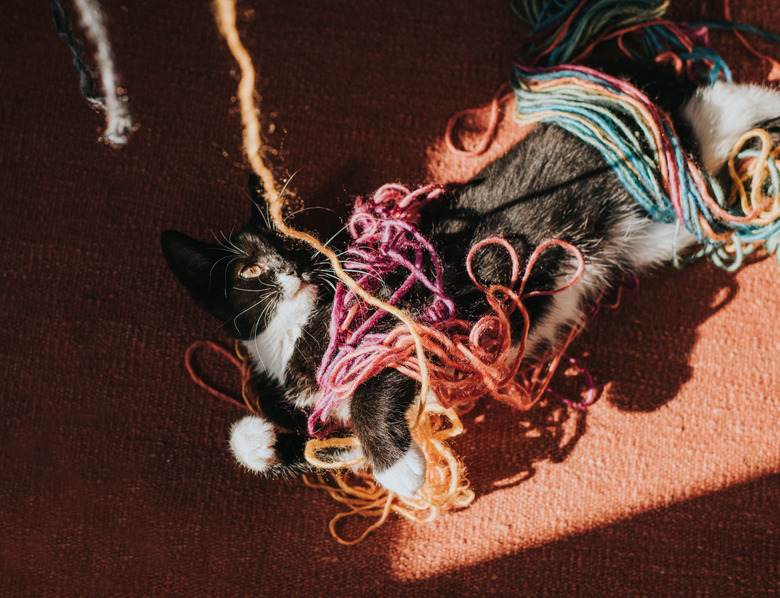Why Do Cats Like String So Much?
Cats are easily entertained, often turning up their nose at cat toys in favor of things like crinkly paper bags and balls of yarn. Cats love string because its winding, slithering movements trigger their prey drive. Although it's OK for your cat to play with string and toys featuring string, it's important to make sure that your cat doesn't ingest any string that gets stuck on his rough tongue.
Why do cats attack moving things?
Why do cats attack moving things?
It's not unusual for kittens to pounce at anything that moves. That includes your wiggling fingers or tapping toes. Felines in the wild have to provide for themselves through hunting, and this instinct hasn't gone away in domesticated cats. In fact, "mousers" and working cats are very much in use for controlling rodents at factories, farms, nurseries, and other industrial campuses.
A house cat still has the primal urge to chase prey. Some cats have a targeted prey drive, preferring toys that emulate rodents, birds, or bugs. Delight your pet by identifying her prey drive and giving her appropriate toys that appeal to it.
Observe how your cat interacts with string. Does she enjoy batting around a ball of yarn and pouncing on the "tail" as it comes unwound? She might enjoy rodent-type toys, such as a clockwork mouse, balls, and stuffed animals. If she loves when you make long, sinuous movements with the string, she might be geared toward bugs, lizards, or other reptiles. Chasing feathers attached to the end of the cat string indicates her preference for birds.
How to play with cat string
How to play with cat string
Creating playtime with your cat and a toy on the end of a string can give your cat an appropriate outlet for pent-up energy while creating an atmosphere of bonding with your pet. Interactive cat toys on a string are the safest way for your cat to engage his love of string.
Buy a commercial interactive cat toy with interchangeable lures — the actual feathers, ball, or other toy at the end for your cat to pounce on and bite. Although you can make your own at home from a stuffed toy and yarn, pet manufacturers have taken out the guesswork by offering tough, catproof materials at a nominal cost.
If your cat wears you out or you want to entertain him with a safe string toy while you're away, check out toys that offer an alternative to yarn or string. Moody Pet's Fling-Ama-String, for example, hooks over any doorknob and uses batteries to fling out a cat-safe string for your pet to chase.
Playing with string safely
Playing with string safely
When it comes to playing with yarn or other light types of string, fibers can get stuck on the rough surface of a cat's tongue. This can cause a cat to try to swallow and end up ingesting the string or part of it. If you see a string hanging from your cat's mouth and going down her throat, don't try to remove it yourself. The same goes for a string protruding from your cat's anus. This is a linear obstruction, and you can severely injure your cat if you pull on it but it's anchored somewhere inside the cat.
If a string is completely inside your cat, the only outward evidence might be your cat vomiting, acting oddly — such as hiding or growling — or even having bloody diarrhea as she tries to expel the foreign body. Don't panic — call your veterinarian and arrange to bring in your cat. Your vet can determine the best way to safely remove it.
References
- Humane Animal Rescue: Working Cats
- The Ohio State University College of Veterinary Medicine: Identifying Prey Preference
- Cat Dancer: Products
- University of Illinois College of Veterinary Medicine: Help! My Pet Swallowed a —!
- Hill's Pet Nutrition: My Cat Ate String: Dangers, What to Do & Treatments
- Moody Pet: Fling-Ama-String
